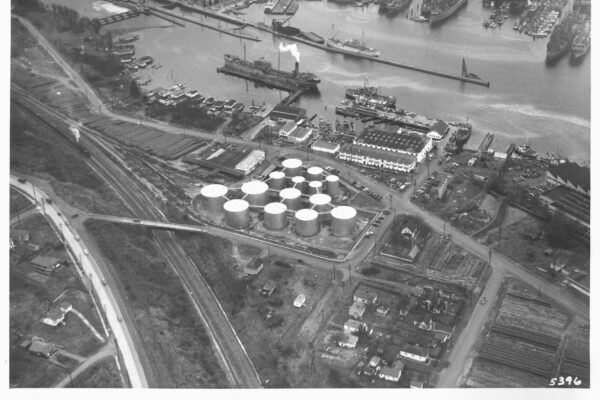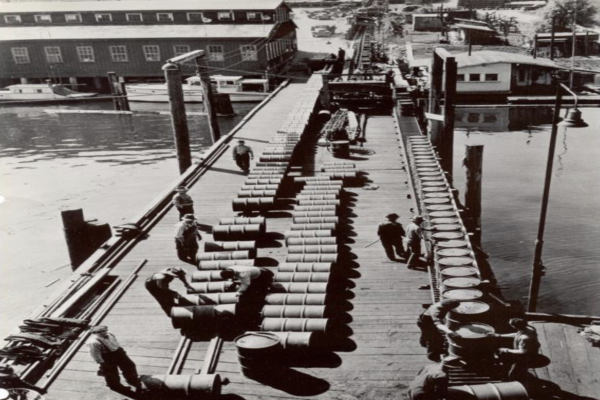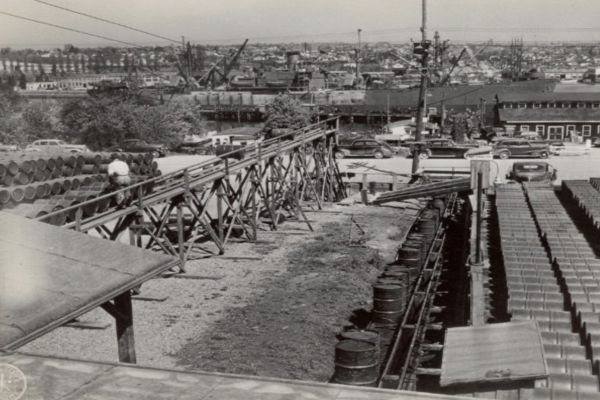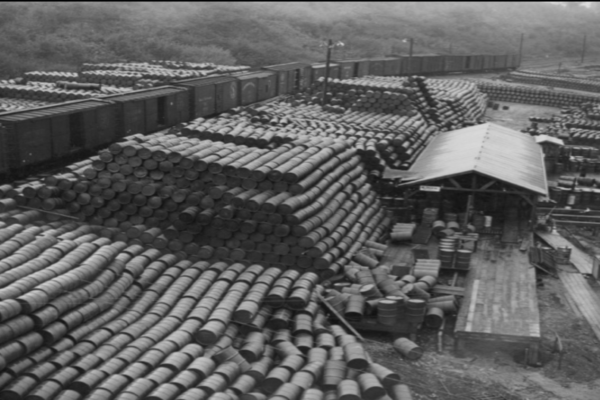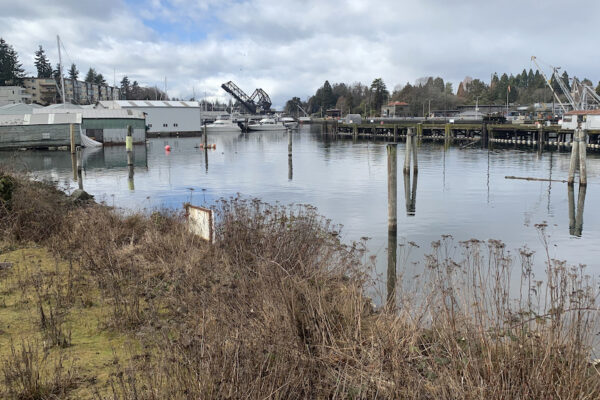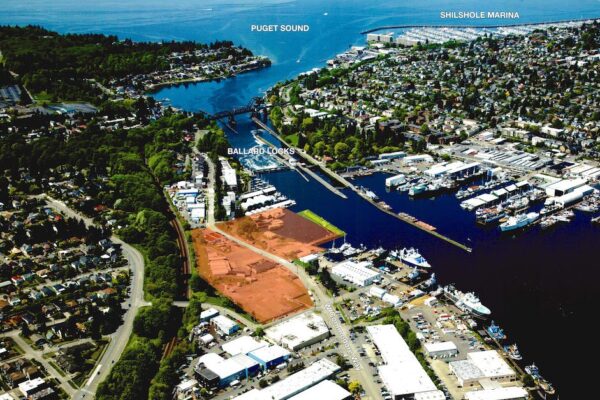Time Oil Company (TOC) began its Seattle Terminal operations in the early 1940s primarily to support World War II efforts and later became one of the largest petroleum companies in the Pacific Northwest with over 100 gasoline stations and convenience stores. Operations ceased at the Seattle Terminal in 2001 and for nearly 60 years included bulk storage and distribution of petroleum products including diesel, gasoline, kerosene and mineral spirits. Petroleum products were delivered to the Bulk Terminal via rail cars from the BNSF railroad, barges and tanker trucks and stored in large above ground storage tanks. Petroleum was then either transported via ships/barges, or pumped directly into tanker trucks. Drums were also filled with fuel in the barreling sheds located on-site and then transferred to the shipping dock via a drum incline conveyor system. Other operations included oil and solvent storage, machine shop operations and hydraulic repair.
TOC Seattle Terminal 1, LLC acquired the Property in November 2020 under the terms of a Prospective Purchaser Consent Decree (PPCD) with the State of Washington Department of Ecology (DOE). Under applicable Washington law, the only way the state can enter into an actual settlement is in the form of a consent decree. It is the highest level of settlement protection available to a private party conducting cleanup work at a DOE site. The PPCD also includes a cash out settlement agreement with the state regarding any potential contribution to the adjacent aquatic sediments. This is a very unusual and favorable result that provides important additional protections to the buyer.
Since July 2018 and as part of the due diligence process, the site was enrolled into the voluntary cleanup program (VCP) with the DOE. Supplemental remedial investigation (RI) activities were performed in 2019 and 2020 to fill the remaining data gaps necessary to complete the RI/FS (Remedial Investigation/Feasibility Study) for the Property. A final RI/FS and Corrective Action Plan (CAP) were approved by DOE in late 2020.
Asbestos abatement and building demolition activities were complete in Q2 2021. Site remediation work commenced in Q3 2021 and consisted of excavation and disposal of nearly 16,000 tons of impacted soil from seven different cleanup areas throughout the site; in-situ soil solidification of 28,000 cubic yards of impacted soils; installation of a shallow groundwater recovery trench with a permeable reactive barrier water treatment vault; and in-situ groundwater treatment. This work was successfully completed in December 2021, and was documented in the Phase 1 Remedial Action Completion Report (RACR). DOE approved the RACR in August 2022.
In order to comply with the requirements of the PPCD, a Long-Term Compliance Monitoring Plan (LTCMP) was prepared with the following primary components: 1) Soil and Remedial Element Management Plan (SREMP), 2) Groundwater Monitoring Plan (GMP), and 3) Vapor Intrusion Assessment and Mitigation Plan (VI Plan). DOE approved the LTCMP in February 2023.
The GMP provides the basis for groundwater monitoring that is necessary to evaluate effectiveness of the remedial actions completed, establishes the monitoring well network, and provides detail regarding compliance monitoring, proposed sample analyses, and data evaluation. Implementation of the approved GMP commenced January 2023 and is currently ongoing throughout the entire site.
The SREMP and VI Plan only apply to the parcels located south of West Commodore Way. The SREMP provides protocols for management of residual contaminated soil during future subsurface activities and the VI plan details requirements for the installation of vapor barriers to be installed beneath all future buildings constructed south of West Commodore Way. No residual soil contamination remains on the parcels north of West Commodore Way.



